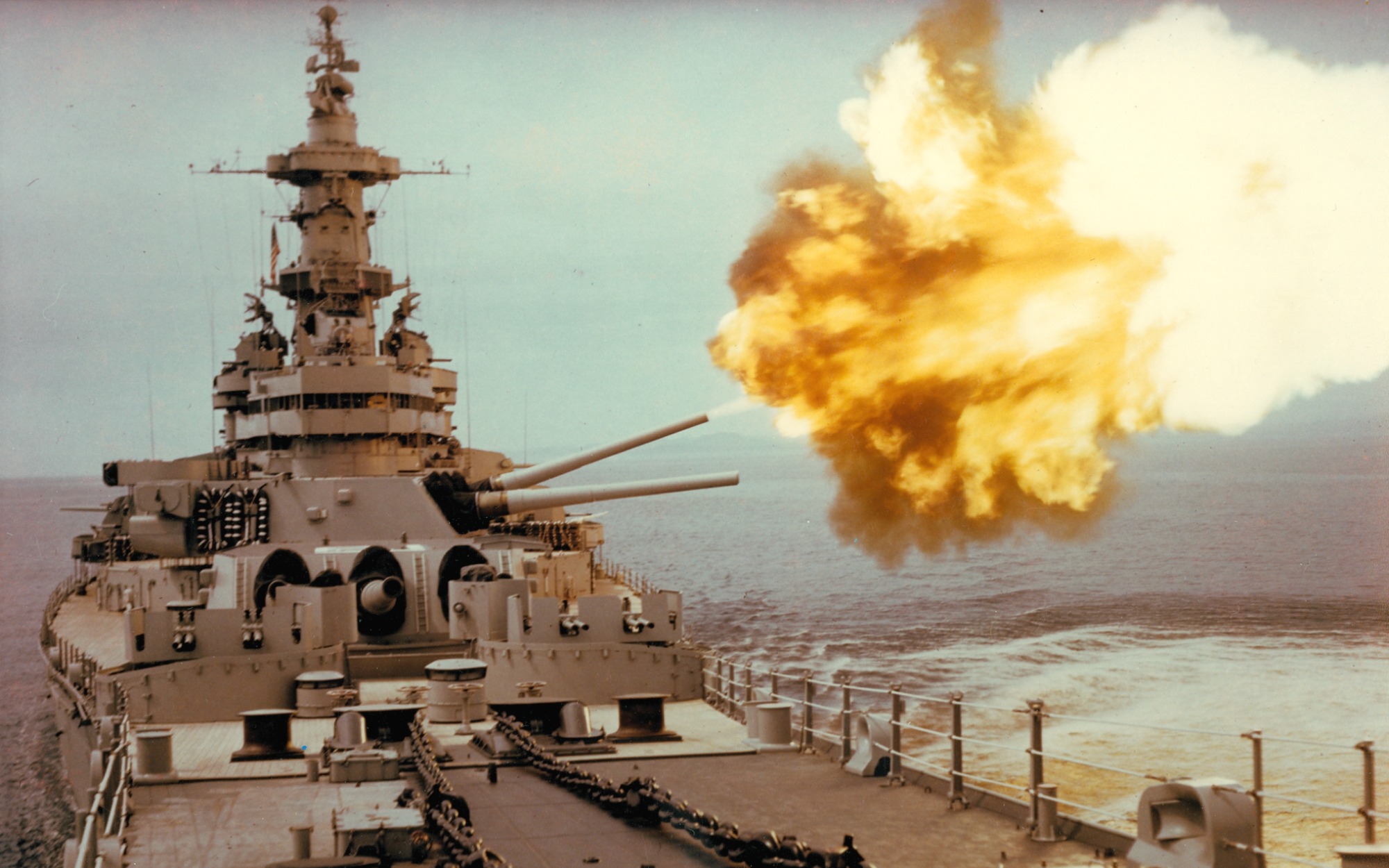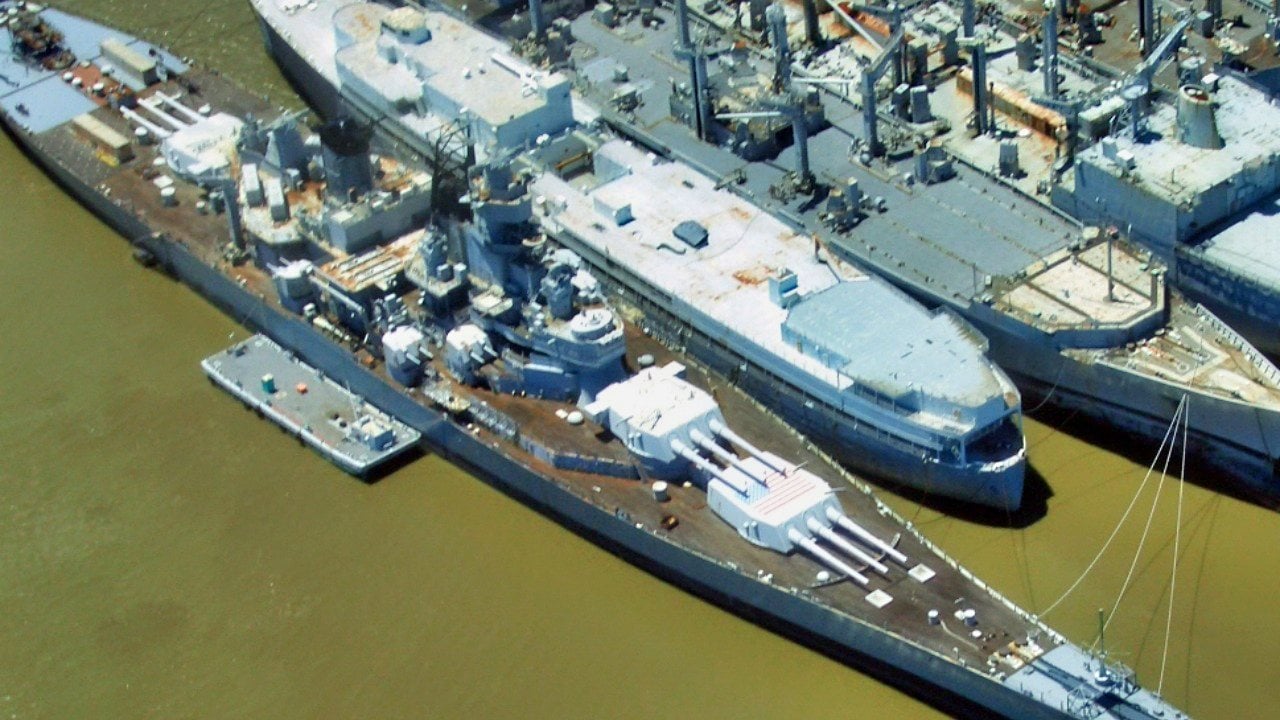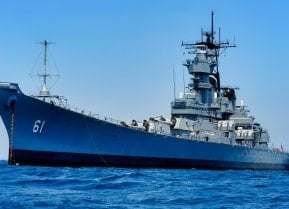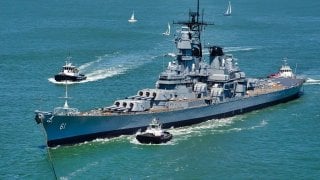U.S. Navy Battleship USS Iowa Made the Ultimate Comeback
Perhaps the most famous of all the US battleships was the USS Iowa, the lead ship of the Iowa-class, a veteran of World War II that is best known perhaps for coming out of retirement – nearly thirty years after being mothballed.
USS Iowa: A Battleship Comeback for the U.S. Navy - The battleship, heavily armored and heavily armed, is an iconic symbol of US naval warfare.
Memorialized with a board game, Hasbro’s Battleship, the battleship transcended military culture and entered the popular culture, and is still what many people think of when they think of the US Navy – despite the fact that the last battleships were laid down and commissioned in the 1940s.
Perhaps the most famous of all the US battleships was the USS Iowa, the lead ship of the Iowa-class, a veteran of World War II that is best known perhaps for coming out of retirement – nearly thirty years after being mothballed.
Getting to know the USS Iowa
The Iowa-class was large.
Measuring 860 feet long at the waterline with a beam of 108 feet and a draft of 37 feet, the Iowa displaced 58,460 tons. Actually, the size of the Iowa was only legal thanks to the “elevator clause” of the Second London Naval Treaty (which, before the elevator clause, capped battleship displacement at 45,700 tons, but was adjusted to account for Japan’s withdrawal from the treaty).
In addition to sheer size, the Iowa boasted a remarkable array of weaponry. In fact, the Iowa-class is the most heavily armed warship that the US Navy ever set to sea.
When first laid down in 1940, the Iowa was armed to counter the impressive naval capabilities of Imperial Japan. Accordingly, the Iowa was outfitted with nine breech-loading 16-inch (406mm)/50-caliber Mark 7 naval guns, which were housed in three 3-gun turrets, configured with two turrets forward and turret aft, in the “2-A-1” configuration.
Each Mark 7 gun was 66 feet long (50 times longer than their 16-inch bore). But of the Mark 7’ss 66 foot length, only 43 feet of the gun was visible (the rest was obscured behind the gun house). The Mark 7’s were massive, weighing about 239,000 pounds each, capable of firing 2,700 pound armor-piercing projectiles with a muzzle velocity of 2,500 feet per second up to a range of 24 miles.
The Mark 7’s were not the Iowa’s only weaponry; the Iowa also had twenty 5-inch (127mm)/38 caliber Mark 12 guns. The Mark 12 guns were held inside ten Mark 28 Mod 2 base ring mounts.
Originally, the Mark 12 was installed on US destroyers in the 1930s – but the gun demonstrated itself to be so capable that the Iowa’s builders decided to import the Mark 12 onto the Iowa.
Actually, the Mark 12 was installed on all US warships constructed between the years 1934 and 1945 because, as the Navy’s Bureau of Ordnance reported, the Mark 12 was “highly reliable, robust and accurate.”
While smaller than the Mark 7, the Mark 12 still weighed nearly 4,000 pounds with a bore length of nearly 16 feet. The Mark 12 fired shells are about 2,500 feet per second and was considered a “dual-purpose gun,” or DP, because it could be used to target both surface and air targets. Originally, the Mark 12 was not envisioned as a DP – yet, in the combat environment the Mark 12 proved itself effective at shooting down Japanese aircraft.
For propulsion, the Iowa relied upon eight Babcock & Wilcox boilers and four double reduction cross-compound geared turbines, with each turbine driving a single shaft. The powerplant was good enough for 212,000 horsepower, which could push the Iowa along at 32 knots per hour. To keep the powerplant humming, the Iowa carried 9,000 tons of fuel, which allowed for a range of 18,300 miles.
Out of Retirement
The most curious thing about the Iowa is that she was mothballed for nearly thirty years – and then recommissioned.
After serving venerably in World War II and the Korean War, the Iowa was decommissioned, entering the Atlantic Reserve Fleet at Philadelphia, Pennsylvania in 1958.

The Iowa would lie dormant in Philadelphia for nearly three decades, several presidential administrations, until 1982, when then-President Ronald Reagan began working to create a 600-ship Navy.
Accordingly, the Iowa was reactivated and retrofitted to catch her up technologically to the 1980s.
The Iowa participated in a variety of NATO exercises and, during the Iran-Iraq War, escorted Kuwaiti tankers.

Tragedy on the USS Iowa
Tragedy struck in 1989 when the Iowa suffered one of the worst peacetime losses of life in US naval history. During a gunnery exercise near Puerto Rico, an explosion occurred within Iowa’s Number Two 16-inch gun turret. 47 sailors were killed. The Navy investigated, concluding that a sailor had caused the intention deliberately. However, the Navy’s conclusion was controversial.
Sandia National Laboratories and the Government Accountability Office conducted a second investigation and their findings conflicted with the Navy’s. Sandia and GAO found that the accidental “overram” had caused the explosion. The Navy never accepted the results of the independent investigation.

In 1990, after the Soviet Union collapsed, the Iowa was decommissioned for the last time. Today, the Iowa is a museum piece, on permanent display in Los Angeles.
About the Author: Harrison Kass
Harrison Kass is a defense and national security writer with over 1,000 total pieces on issues involving global affairs. An attorney, pilot, guitarist, and minor pro hockey player, Harrison joined the US Air Force as a Pilot Trainee but was medically discharged. Harrison holds a BA from Lake Forest College, a JD from the University of Oregon, and an MA from New York University. Harrison listens to Dokken.
All images are Creative Commons.


